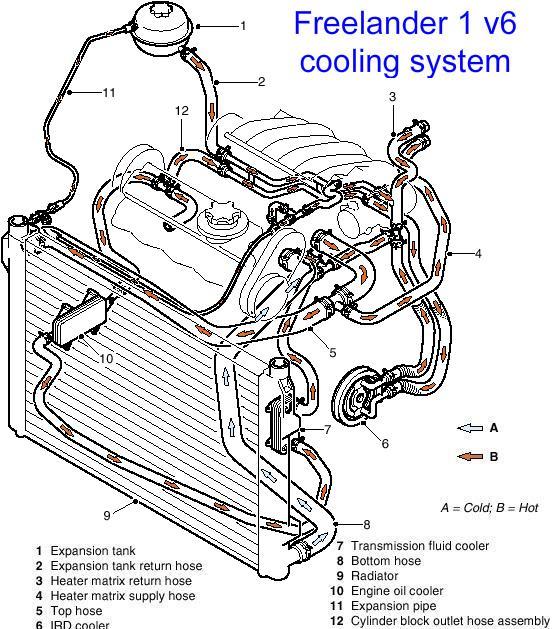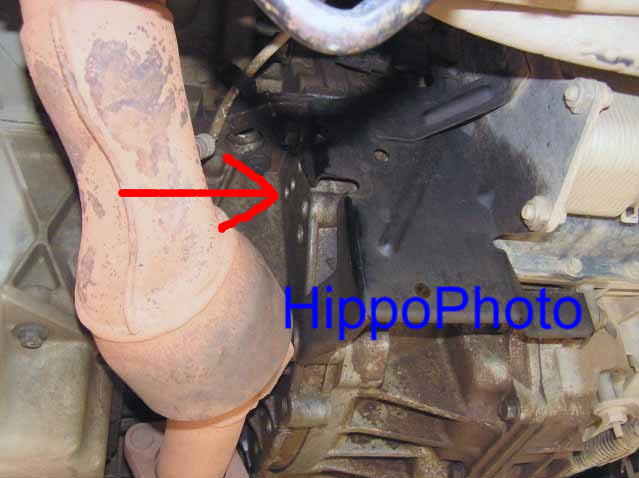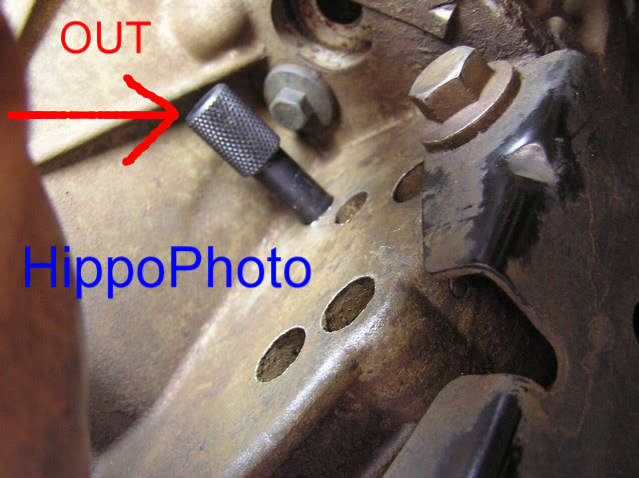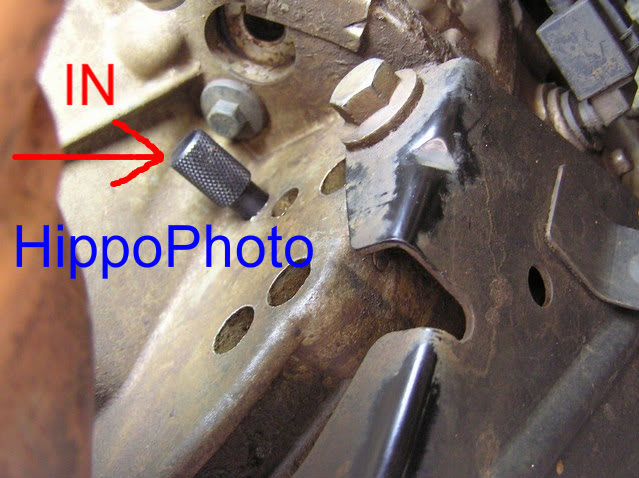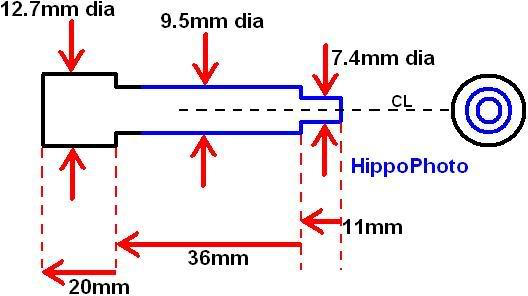You are using an out of date browser. It may not display this or other websites correctly.
You should upgrade or use an alternative browser.
You should upgrade or use an alternative browser.
Freelander V6 Overheating
- Thread starter s1nn0n
- Start date
This site contains affiliate links for which LandyZone may be compensated if you make a purchase.
comdek
Member
- Posts
- 95
Yes, the hoses only enter in a position in the thermostat housing. I removed a "T" which is also a valve and put on the right side.
The 2004+ FR have a different connections between oil and transmission rad and there is another temp sensor in output from radiator.
The 2004+ FR have a different connections between oil and transmission rad and there is another temp sensor in output from radiator.
Attachments
Hippo
Lord Hippo
- Posts
- 55,946
If it's boiling then it can only be a few items wrong:
* coolant isn't flowing enough to allow cooling - blocked or pump problem
* system isn't pressurising to stop coolant boiling or it's going above antifreeze boiling point
* radiator not getting hot when needed as flow to it isn't enough/blocked
* coolant isn't flowing enough to allow cooling - blocked or pump problem
* system isn't pressurising to stop coolant boiling or it's going above antifreeze boiling point
* radiator not getting hot when needed as flow to it isn't enough/blocked
comdek
Member
- Posts
- 95
The system is pressurizing because the top hose is rigid on hot temp. I found no obstructions in the hoses when washed the system and not much rust comes out.
The last option is remove the water pump, change it, and verify the output on block if is flowing.
The thermostatic valve model from this engine hampers perform flow tests.
I'll take the car into the mechanic to do the job next week. I don´t have the tools to remove the timing belt and engine mounts.I will posting pictures and results here.
I know KV6 engine has several water pump models with different type of impellers (metal/plastic, small/larger paddles, with holes etc.). In Brazil I found the pump from Takao manufacturer (pic below). It is good?
The last option is remove the water pump, change it, and verify the output on block if is flowing.
The thermostatic valve model from this engine hampers perform flow tests.
I'll take the car into the mechanic to do the job next week. I don´t have the tools to remove the timing belt and engine mounts.I will posting pictures and results here.
I know KV6 engine has several water pump models with different type of impellers (metal/plastic, small/larger paddles, with holes etc.). In Brazil I found the pump from Takao manufacturer (pic below). It is good?
Attachments
B34R
Active Member
- Posts
- 410
You say you have no idea about the bleed screw on the back of the engine, if youve only used one bleed screw on the engine that's probably what your problem is then, there are TWO bleed bolts on the V6, one on the front of the block and one on the back.
My guess is that you've been running with no coolant in the rear three cylinders... refer to hippos guide - I seem to remember that it shows where the bleed bolt is on the front AND back.
My guess is that you've been running with no coolant in the rear three cylinders... refer to hippos guide - I seem to remember that it shows where the bleed bolt is on the front AND back.
Hippo
Lord Hippo
- Posts
- 55,946
My guess is it's option 1 then as the pump will pump more volume of coolant when the engine revs increase. If at this point the coolant boils then the coolant isn't flowing through the engine, or isn't flowing fast enough. The engine needs the increased flow as revs increase as it produces more heat that needs to be washed away by the coolant. boiling isn't a good thing to happen as you know. Sadly boiling the engine can be disastrous.If it's boiling then it can only be a few items wrong:
* coolant isn't flowing enough to allow cooling - blocked or pump problem
* system isn't pressurising to stop coolant boiling or it's going above antifreeze boiling point
* radiator not getting hot when needed as flow to it isn't enough/blocked
Tempus Fugit
Well-Known Member
- Posts
- 20,292
- Location
- Great Britain
Is the water you have used distilled and is the coolant OAT?
Don't give up either.
Don't give up either.
comdek
Member
- Posts
- 95
I always used radiator additive and tap water (50% water, 50% red additive) and never gave problem. I always wash and change the coolant every 6 months.The boil point at 15 PSI (cap max pressure), with the system using only water is 257ºF (123ºC).
The nominal temp in KV6 engine I think its 92~96ºC in idle and max 100ºC on full power (thermostat starts open at 82ºC and fully in 102ºC). In my case, the system works at 96ºC ~ 99ºC in idle and there are variations to 120 ° C at full power and falls to 92°C suddenly.Everything indicates failure in thermostatic valve, but I tested the old in hot water and opens normally. To avoid problems and needs to open collector again, bought a new valve of the same model and tested in hot water also before installing.
During all testing procedures, never let the engine go from 120°C+ to avoid damaging the head gasket. At this temp, the red light turns on.
This week i´ll try to remove the water pump.
The nominal temp in KV6 engine I think its 92~96ºC in idle and max 100ºC on full power (thermostat starts open at 82ºC and fully in 102ºC). In my case, the system works at 96ºC ~ 99ºC in idle and there are variations to 120 ° C at full power and falls to 92°C suddenly.Everything indicates failure in thermostatic valve, but I tested the old in hot water and opens normally. To avoid problems and needs to open collector again, bought a new valve of the same model and tested in hot water also before installing.
During all testing procedures, never let the engine go from 120°C+ to avoid damaging the head gasket. At this temp, the red light turns on.
This week i´ll try to remove the water pump.
Alibro
Well-Known Member
- Posts
- 7,449
- Location
- Northern Ireland
Have you by chance mixed OAT with the other type (can't remember what it's called) as I'm told they congeal if mixed and block waterways.
And are you getting a good strong flow into the header bottle.
I'll bet when you find the fault you'll kick yourself as it will be something simple. Either that or it is a head gasket.
And are you getting a good strong flow into the header bottle.
I'll bet when you find the fault you'll kick yourself as it will be something simple. Either that or it is a head gasket.
Last edited:
comdek
Member
- Posts
- 95
Today I started to work for remove and change the water pump.
After remove the top engine mounts and some bolts from cambelt cover, stopped in crankshaft pulley bolt. I need a way to lock the pulley and a lot of strength to get this screw out.
After remove the top engine mounts and some bolts from cambelt cover, stopped in crankshaft pulley bolt. I need a way to lock the pulley and a lot of strength to get this screw out.
Attachments
zefrench
Active Member
- Posts
- 428
- Location
- Ontario, Canada
Well, the results from today;
* Buy new cap from reservoir in Land Rover dealership and changed.
* Removed all coolant, removing from bottom house and engine bleed screw.
* Tested 15 minutes with 10 PSI, no leaking and air noise detected.
* Put 4 liters of coolant adictive (red) and water.
* Bleeded bubbles using engine screw.
* Bleeded using using heater hose screw
* Completed reservoir at MAX mark with coolant.
* Started engine and wait 5 min in idle. Turn off engine. Wait 15min to cool.
* Squeezing the bottom hose and bleeded again in heater hose screw.
* Completed reservoir at MAX mark with coolant.
* Running engine 7 minutes variyng in idle and 3500rpm. (In ODB Scanner, temp variyng 99 ~102ºC)
* Wait 40min to cool.
* Completed reservoir at MAX mark with coolant.
* Run out to street. After 40 minutes running (Temp varying 96ºC ~ 108ºC), on a climb the temperature goes to 120ºC and red light on. Stopped the car, wait to cool and returned to home.
Given up all hope.
Buying a new cap is not for sure. I have seen one new one faulty. Did you test the cap properly?
zefrench
Active Member
- Posts
- 428
- Location
- Ontario, Canada
Fly wheel locking pin:
*cough* and the dimensions for those who don’t have the timing pin:

To make a locking pin, use a drill and a file and a bolt. Put the bolt in the drill and rotate against the file. Time consuming but cheap.
comdek
Member
- Posts
- 95
Will the pin hole strong enough to hold necessary strength to take the screw out? I´m afraid that the pin breaks or damage the flywheel.
zefrench, I´ve tested the cap on reservoir pressuring the system at 16psi, after that, the cap releases air and pressure maintain ~15PSI. No leakings below this pressure.
zefrench, I´ve tested the cap on reservoir pressuring the system at 16psi, after that, the cap releases air and pressure maintain ~15PSI. No leakings below this pressure.
The locking pin that Hippo is talking isn't actually designed to hold the crank solid for removing the pulley bolt. It's designed to hold the crank still during repair work and belt changes. It will work, but also carries an element of risk of it breaking, causing more problems. The official way to lock the crank is to remove the starter motor and use a special flywheel locking tool against the starter ring gear. A well fitting chisel and a helper can work just as wellWill the pin hole strong enough to hold necessary strength to take the screw out? I´m afraid that the pin breaks or damage the flywheel.
zefrench, I´ve tested the cap on reservoir pressuring the system at 16psi, after that, the cap releases air and pressure maintain ~15PSI. No leakings below this pressure.
The official tool looks similar to this.

